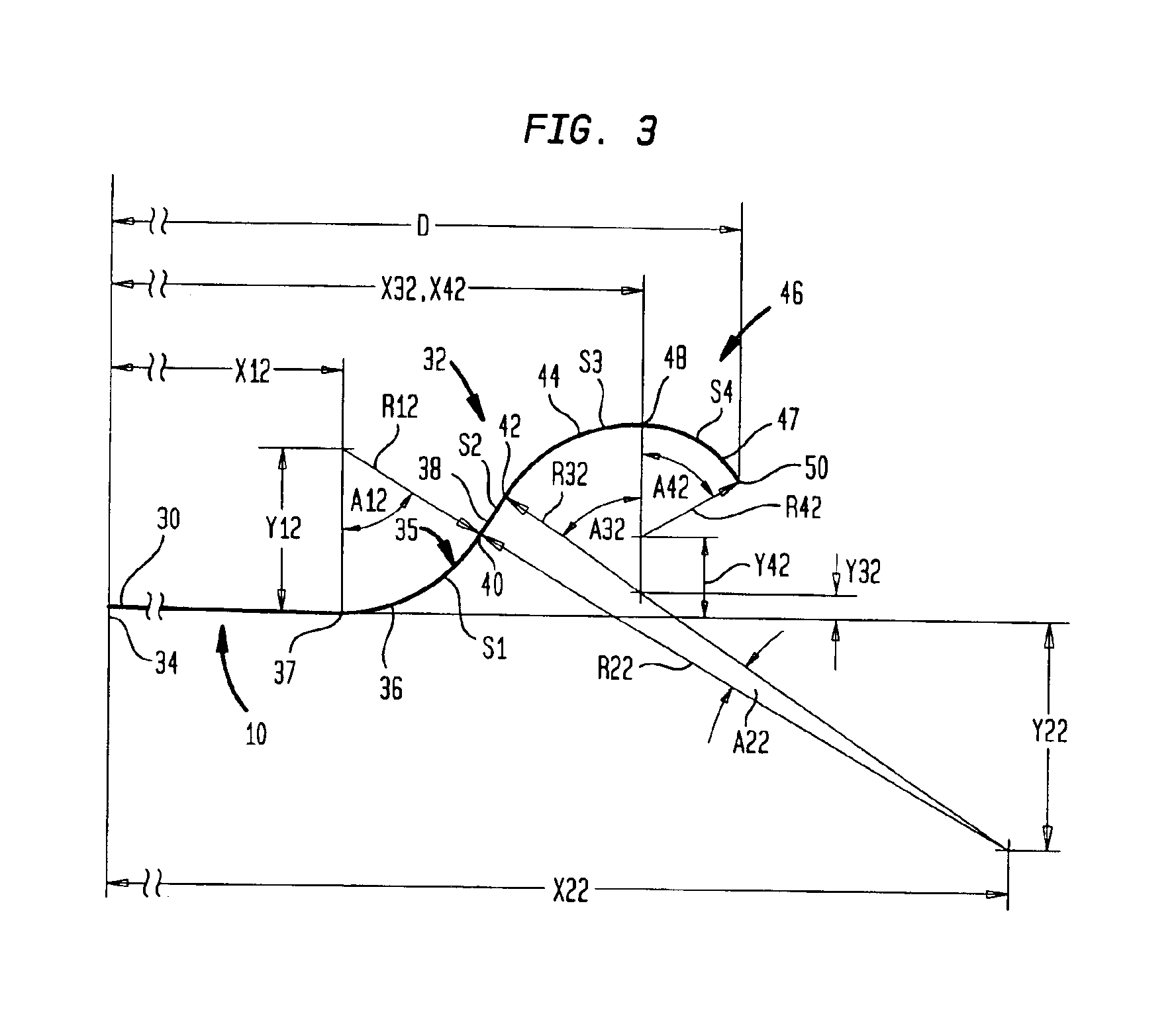Thermoformed food containers with enhanced rigidity
a food container and thermoform technology, applied in the field of plastic objects, can solve the problems of mica interaction with polypropylene, unsatisfactory odor, and high cost of paper products, and achieve the effect of less die lip buildup and enhanced rigidity
- Summary
- Abstract
- Description
- Claims
- Application Information
AI Technical Summary
Benefits of technology
Problems solved by technology
Method used
Image
Examples
specific examples
[0059]A series of 11″ plates described generally above were thermoformed from extruded sheet having the following composition:
[0060]
ComponentWt. PercentPolypropylene52Mica30Calcium Carbonate10HDPE5TiO2 + color3
Basis weights of sheet material used were from 255 to 315 lbs / 3000 square foot ream and 3 different types of particulate calcium carbonate were used: 12 micron mean particle size material, 1 micron mean particle size material (Lot A) and another 1 micron mean particle size material (Lot B). The one micron material is available from Imerys as supermite calcium carbonate. Six micron material, available from Omya, called Omya 5, has an average particle size of about 6 microns and may likewise be employed. The mica may have a mean particle size of 50 microns or so.
[0061]Results are summarized in Table 5 below and appear graphically in FIGS. 4 and 5 which are plots of SSI Rigidity versus product weights, that is, the weight of the plate. As can be seen, products made with the 1 mic...
PUM
| Property | Measurement | Unit |
|---|---|---|
| mean particle size | aaaaa | aaaaa |
| mean particle size | aaaaa | aaaaa |
| mean particle size | aaaaa | aaaaa |
Abstract
Description
Claims
Application Information
 Login to View More
Login to View More - R&D
- Intellectual Property
- Life Sciences
- Materials
- Tech Scout
- Unparalleled Data Quality
- Higher Quality Content
- 60% Fewer Hallucinations
Browse by: Latest US Patents, China's latest patents, Technical Efficacy Thesaurus, Application Domain, Technology Topic, Popular Technical Reports.
© 2025 PatSnap. All rights reserved.Legal|Privacy policy|Modern Slavery Act Transparency Statement|Sitemap|About US| Contact US: help@patsnap.com



